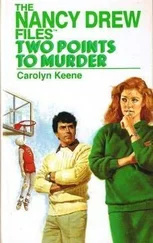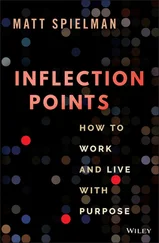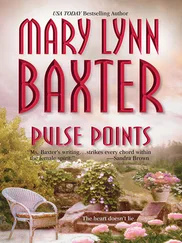He looked shocked. “Mr. President,” he said, “your staff has known about this for weeks.” Then he dropped another bomb. He wasn’t the only one planning to resign. So was FBI Director Bob Mueller. I was about to witness the largest mass resignation in modern presidential history, and we were in the middle of a war.
I called Bob into the Oval Office. I had come to know him well over the past two and a half years. He was a good and decent man, a former Princeton hockey star who had served in the Marines and led the U.S. Attorney’s Office in San Francisco. Without hesitation, he agreed with Comey. If I continued the program over the Justice Department’s objection, he said, he couldn’t serve in my administration.
I had to make a big decision, and fast. Some in the White House believed I should stand on my powers under Article II of the Constitution and suffer the walkout. Others counseled that I accept Justice’s objections, modify the program, and keep the administration intact.
I was willing to defend the powers of the presidency under Article II. But not at any cost. I thought about the Saturday Night Massacre in October 1973, when President Richard Nixon’s firing of Watergate prosecutor Archibald Cox led his attorney general and deputy attorney general to resign. That was not a historical crisis I was eager to replicate. It wouldn’t give me much satisfaction to know I was right on the legal principles while my administration imploded and our key programs in the war on terror were exposed in the media firestorm that would inevitably follow.
I decided to accommodate the Justice Department’s concern by modifying the part of the program they found problematic, while leaving the TSP in place. Comey and Mueller dropped their resignation threats. The surveillance program continued to produce results, and that was the most important thing.
I was relieved to have the crisis over, but I was disturbed it had happened at all. I made clear to my advisers that I never wanted to be blindsided like that again. I did not suspect bad intentions on anyone’s part. One of the toughest questions every White House faces is how to manage the president’s time and when to bring policy disputes to his desk. The standoff over the surveillance program was a case of bad judgment. There was no shortage of disagreements in the years ahead, but nothing like this ever happened again.

One of my favorite books is the fine historian David McCullough’s biography of President Harry Truman. I admired Truman’s toughness, principle, and strategic vision. “I felt like the moon, the stars, and all the planets had fallen on me,” he said when he took office suddenly in the final months of World War II. Yet the man from Missouri knew how to make a hard decision and stick by it. He did what he thought was right and didn’t care much what the critics said. When he left office in 1953, his approval ratings were in the twenties. Today he is viewed as one of America’s great presidents.
After she became secretary of state, Condi gave me a biography of Truman’s secretary of state, Dean Acheson. Both books reminded me how Truman’s decisions in the late 1940s and early 1950s laid the foundation for victory in the Cold War and helped shape the world I inherited as president. Truman forged the NATO alliance; signed the National Security Act of 1947, which created the CIA, the National Security Council, and the Defense Department; fought an unpopular war that enabled the rise of a democratic ally in South Korea; and pledged assistance to all countries resisting communist takeover, the Truman Doctrine.
As in Truman’s era, we were in the early years of a long struggle. We had created a variety of tools to deal with the threats. I made it a high priority of my second term to turn those tools into institutions and laws that would be available to my successors.
In some areas, we were off to a good start. The Department of Homeland Security, while prone to the inefficiencies of any large bureaucracy, was an improvement over twenty-two uncoordinated agencies. The FBI had created a new National Security Branch focused on preventing terrorist attacks. The Defense Department had established a new Northern Command with the sole responsibility to defend the homeland. The Treasury Department had adopted an aggressive new approach to disrupting terrorist financing. We had recruited more than ninety countries to a new Proliferation Security Initiative aimed at stopping international trafficking of materials related to weapons of mass destruction. Based in part on the recommendation of the 9/11 Commission, we had created a new National Counterterrorism Center and appointed a director of national intelligence—the largest reform of the intelligence community since Truman created the CIA.
In other areas, we had work to do. Some of our most important tools in the war on terror, including the TSP and the CIA interrogation program, were based on the broad authority of Article II and the congressional war resolution. The best way to ensure they remained available after I left office was to work with Congress to codify those programs into law. As Justice Robert Jackson explained in a landmark opinion in 1952, a president has the most authority when he is acting with the explicit support of Congress.
The challenge was how to present the TSP and the CIA interrogation program to Congress without exposing details to the enemy. I believed it was possible, but we would have to work closely with members of Congress to structure the debate in a way that did not reveal critical secrets. We were developing a strategy to do that. Then two events forced our hand.

“The New York Times is on the surveillance story again,” Steve Hadley told me in December 2005. The previous year, the Times had considered running a story exposing the TSP. Condi and Mike Hayden had talked the paper out of revealing the key elements of the program.
I asked the Times publisher, Arthur Sulzberger, Jr., and editor, Bill Keller, to come see me on December 5, 2005. It was a rare request, and I appreciated their willingness to speak face to face. They arrived around 5:00 p.m. Steve Hadley, Andy Card, Mike Hayden, and I greeted them in the Oval Office. We sat by the fireplace beneath the portrait of George Washington. I told them the nation was still in danger, and their newspaper was on the verge of increasing that danger by revealing the TSP in a way that could tip off our enemies. Then I authorized General Hayden to walk them through the program.
Mike is a calming personality. He is not a macho guy who tries to intimidate people with the stars on his shoulders. He talked about his long career in intelligence and his natural suspicion about any program that could result in collecting information on U.S. citizens. He outlined the safeguards in place, the numerous legal reviews, and the results the program had produced.
Mike’s briefing lasted about thirty minutes. I watched the Times men closely. They were stone-faced. I told them they could ask Mike any question they wanted. They didn’t have many. I looked directly at Sulzberger and strongly urged that he withhold the story for national security reasons. He said he would consider my request.
Ten days later, Bill Keller called Steve to say the Times was going forward with the story. We had no chance for a closing argument. They had posted it on their website before Keller placed the call.
I was disappointed in the Times and angry at whoever had betrayed their country by leaking the story. The Justice Department opened a criminal investigation into the disclosure of classified information. As of the summer of 2010, nobody had been prosecuted.
Читать дальше












